Pool cleaning service rates vary depending on factors such as pool size, frequency of cleaning, and the services included. Understanding these factors can help homeowners make informed decisions when choosing a service provider.
Understanding the Basics of Pool Service Costs
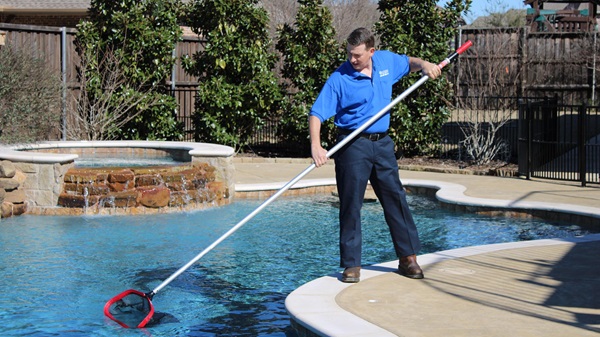
How Much Does Pool Service Typically Cost?
Regular Maintenance: On average, weekly or biweekly pool maintenance services can range from $80 to $150 per visit. This includes tasks such as skimming, vacuuming, brushing, chemical balancing, and equipment inspection.
One-Time Cleanings: For one-time or occasional cleanings, such as before a special event or after a period of neglect, the cost can range from $150 to $300 or more, depending on the size and condition of the pool.
Repairs and Upgrades: Repairing or replacing pool equipment, such as pumps, filters, heaters, or lights, can vary widely in cost depending on the extent of the damage and the type of equipment being installed. Costs for repairs and upgrades can range from a few hundred to several thousand dollars.
Specialized Services: Additional services such as acid washing, tile cleaning, and leak detection typically incur extra charges. The cost of these specialized services can vary depending on the complexity of the job and the extent of the work required.
Breaking Down Average Pool Service Costs
1. Chemical Balancing: This typically involves testing and adjusting the pool water’s pH, chlorine, alkalinity, and calcium hardness levels. The cost of chemical balancing services is usually included in the overall maintenance package.
2. Cleaning and Skimming: Regular cleaning tasks, such as skimming the surface, vacuuming debris from the bottom, and brushing the walls and tiles, are typically included in the maintenance service and may incur additional charges for one-time cleanings or specialized treatments.
3. Equipment Maintenance: Checking and servicing pool equipment, such as pumps, filters, and heaters, is essential for ensuring proper functioning and longevity. The cost of equipment maintenance may vary depending on the type of equipment and any necessary repairs or replacements.
4. Winterizing and Opening: Winterizing the pool in preparation for colder months and opening it again in the spring involves specific procedures and may incur additional charges beyond regular maintenance.
The Factors That Influence the Cost of Pool Service
1. Size of the Pool: Larger pools require more time and resources to maintain, resulting in higher service costs compared to smaller pools.
2. Location: The cost of pool service can vary depending on the local market rates, cost of living, and demand for pool maintenance services in your area.
3. Frequency of Service: Regular maintenance plans typically offer discounted rates compared to one-time or occasional cleanings. The more frequently you schedule pool service, the lower the cost per visit may be.
4. Condition of the Pool: Pools that are heavily soiled, neglected, or in need of repairs may require more extensive cleaning and maintenance, resulting in higher service costs.
5. Additional Services: Specialized services such as acid washing, tile cleaning, or leak detection incur extra charges beyond regular maintenance and can contribute to higher overall costs.
Decoding Pool Maintenance Costs
Decoding pool maintenance costs involves understanding the differences between weekly and monthly service plans, as well as the factors influencing the cost of keeping your pool water sparkling and maintaining pool filters and equipment.
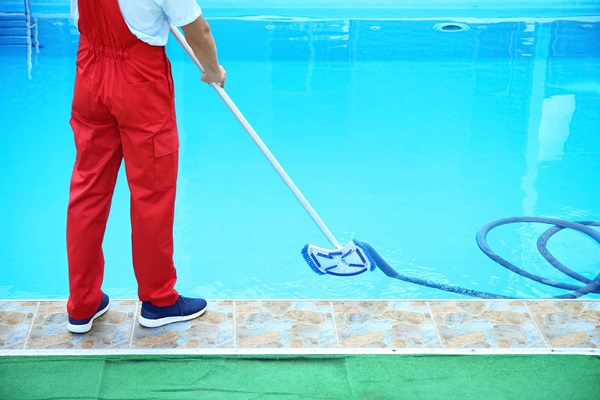
Weekly vs. Monthly Pool Service: What’s the Cost Difference?
Weekly Service: Weekly pool maintenance typically includes tasks such as skimming, vacuuming, brushing, chemical balancing, and equipment inspection. The cost of weekly service can range from $80 to $150 per visit, depending on factors such as the size of the pool, location, and service provider.
Monthly Service: Monthly pool service plans are less frequent and may include fewer tasks compared to weekly service. Monthly service plans may cost less per visit but can result in higher overall costs if additional cleanings or treatments are needed to address issues that arise between visits.
The Price Tag of Keeping Your Pool Water Sparkling
Chemicals: The cost of pool chemicals, including chlorine, pH balancers, algaecides, and clarifiers, can vary depending on the size of the pool and the frequency of chemical treatments. On average, homeowners can expect to spend between $50 and $150 per month on pool chemicals.
Water Testing: Testing kits or strips for monitoring water chemistry typically cost between $10 and $50, depending on the type and brand. Some pool service providers may include water testing as part of their maintenance packages.
Special Treatments: Specialized treatments such as shock treatments, stain removal, and algae treatments may incur additional costs beyond regular maintenance. The cost of these treatments can vary depending on the severity of the issue and the products used.
Cost Considerations for Pool Filter and Equipment Maintenance
Filter Maintenance: Cleaning and replacing pool filters as needed is essential for maintaining water clarity and circulation. The cost of filter maintenance can vary depending on the type of filter and any necessary repairs or replacements. On average, homeowners can expect to spend between $100 and $500 per year on filter maintenance.
Pump Maintenance: Inspecting, cleaning, and servicing pool pumps is necessary for ensuring proper circulation and filtration. The cost of pump maintenance can vary depending on the type of pump and any necessary repairs or replacements. On average, homeowners can expect to spend between $100 and $300 per year on pump maintenance.
Other Equipment: Maintaining other pool equipment such as heaters, cleaners, and lights may also incur additional costs. The cost of equipment maintenance can vary depending on the type of equipment and any necessary repairs or replacements.
Choosing Between Weekly and Monthly Pool Services
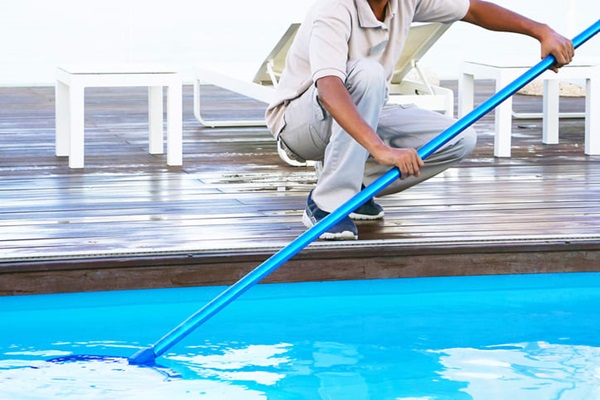
Benefits of Weekly Pool Service for Homeowners
1. Consistent Maintenance: Weekly pool service ensures that your pool receives regular maintenance, including skimming, vacuuming, brushing, and chemical balancing. Consistent upkeep helps prevent algae growth, staining, and other issues that can arise from neglect.
2. Water Quality: Weekly service allows for more frequent testing and adjustments of water chemistry, ensuring that pH, chlorine levels, and other parameters remain within the optimal range. This helps maintain water clarity, comfort, and safety for swimmers.
3. Preventative Maintenance: Regular inspections during weekly service visits allow technicians to identify and address potential problems early, such as equipment malfunctions or leaks. Addressing issues promptly can help prevent costly repairs down the line.
4. Convenience: With weekly service, homeowners can enjoy peace of mind knowing that their pool is being cared for on a consistent basis without having to worry about scheduling individual cleanings or treatments.
Is Monthly Pool Service Enough to Keep Your Pool Ready?
While monthly pool service may be suitable for some homeowners, it may not be sufficient to keep your pool consistently clean, safe, and ready for use, especially during peak swimming season or in areas with high temperatures and frequent rainfall. Here are some considerations:
- Algae Growth: Monthly service intervals may not provide adequate algae prevention, especially in warm climates where algae can proliferate rapidly. Algae growth can make the pool water cloudy, green, and unsuitable for swimming.
- Water Chemistry: Monthly water testing and adjustments may not be frequent enough to maintain optimal water chemistry. Fluctuations in pH, chlorine levels, and other parameters can lead to water imbalances, algae growth, and discomfort for swimmers.
- Debris Accumulation: Leaves, insects, and other debris can accumulate quickly in the pool, especially during windy or stormy weather. Monthly service may not be sufficient to remove debris and maintain a clean pool environment.
Evaluating the Best Frequency for Your Pool Maintenance
Consider factors such as pool usage, climate, budget, and personal preferences when choosing the frequency of pool service.
If your pool is heavily used or located in an area with warm temperatures and frequent rainfall, a weekly service may be more suitable to maintain water quality and prevent issues.
Monthly service may be adequate for pools that are used infrequently or in cooler climates with less vegetation and debris.
Consult with a professional pool service provider to assess your pool’s needs and determine the best frequency for maintenance based on your specific circumstances.
Special Considerations in Pool Cleaning Service Rates
When it comes to pool cleaning service rates, several special considerations can impact the cost. These include factors such as pool size and type, whether it’s a saltwater or chlorine pool, and the price of a first-time cleaning service.
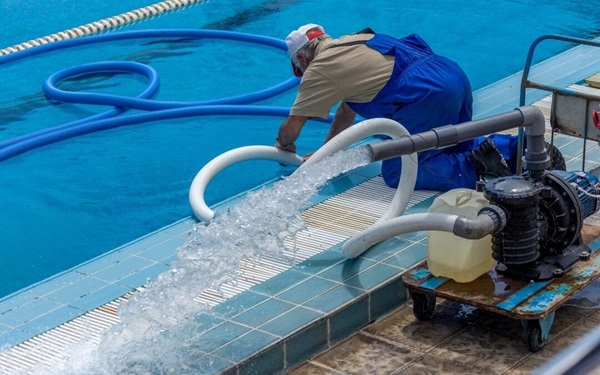
The Impact of Pool Size and Type on Cleaning Costs
Pool Size: Larger pools generally require more time, labor, and chemicals to clean compared to smaller pools. Therefore, the size of the pool directly influences the cleaning costs.
Pool Type: The type of pool surface (e.g., plaster, vinyl, fiberglass) can also affect cleaning costs. Certain surfaces may be more prone to staining or algae growth, requiring additional cleaning time and effort.
Navigating the Costs for Saltwater vs. Chlorine Pool Maintenance
Chemical Costs: Saltwater pools typically require fewer chemicals for maintenance compared to chlorine pools. However, saltwater systems may require occasional adjustments and periodic maintenance, which can impact overall cleaning costs.
Equipment Maintenance: Saltwater pool systems have specialized equipment, such as salt chlorinators, which may require maintenance or repair. The cost of maintaining this equipment should be factored into the overall cleaning costs of saltwater pools.
Understanding the Price for First-Time Pool Cleaning Service
Initial Assessment: The first-time pool cleaning service often includes a thorough assessment of the pool’s condition, including checking equipment, water chemistry, and surface condition. This initial assessment helps determine the level of cleaning required and may impact the overall cost.
Extra Cleaning: If the pool has been neglected or requires additional treatments such as algae removal or stain treatment, the first-time cleaning service may incur additional charges compared to routine maintenance visits.
One-Time Fee vs. Ongoing Service: Some pool cleaning companies may offer a one-time fee for initial cleaning, while others may include it as part of an ongoing service package. Be sure to clarify the terms and pricing with the service provider before scheduling the first-time cleaning.
Cost-Effective Strategies for Pool Service and Maintenance
Maintaining a pool can be costly, but there are cost-effective strategies you can implement to budget for annual maintenance costs and reduce service expenses without compromising quality.
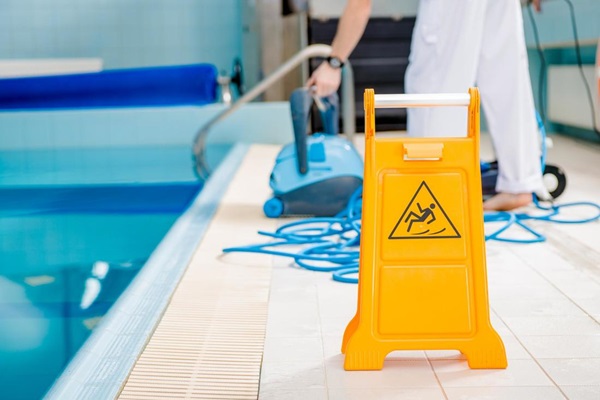
How to Budget for Your Annual Pool Maintenance Costs?
Evaluate Annual Expenses: Estimate the costs of routine maintenance, chemicals, equipment repairs, and occasional services like pool cleaning and winterization. Use past expenses as a guide, considering any changes in pool usage or conditions.
Set Aside a Pool Maintenance Fund: Allocate a portion of your monthly budget or set aside a lump sum specifically for pool maintenance expenses. Having a dedicated fund ensures you’re financially prepared for routine and unexpected costs.
Plan for Seasonal Adjustments: Anticipate higher expenses during peak swimming season for increased chemical usage, more frequent cleanings, and potential repairs. Adjust your budget accordingly to accommodate seasonal fluctuations.
Tips for Reducing Your Pool Service Costs Without Compromising Quality
Regular Maintenance: Stay proactive with routine maintenance tasks like skimming, brushing, and chemical balancing to prevent costly issues from arising. Regular upkeep helps maintain water quality and extends the lifespan of pool equipment.
DIY Where Possible: Learn to perform basic maintenance tasks yourself, such as skimming debris, cleaning filters, and testing water chemistry. DIYing certain tasks can save on service fees while still ensuring proper care of your pool.
Invest in energy-efficient equipment: Upgrade to energy-efficient pool pumps, heaters, and lighting to reduce energy consumption and lower utility bills over time. While upfront costs may be higher, the long-term savings can outweigh the initial investment.
Selecting the Right Pool Service Company to Maximize Value
Research and compare: Look for reputable pool service companies with positive reviews and a track record of quality service. Obtain quotes from multiple providers and compare their offerings to find the best value for your budget.
Ask About Service Packages: Inquire about service packages that bundle routine maintenance tasks at a discounted rate. Service packages may offer better value than paying for individual services separately.
Check for certifications and insurance: Choose a pool service company that is licensed, certified, and insured. This ensures they meet industry standards, have proper training, and provide liability coverage for any damages or accidents.
Communicate Your Needs: Clearly communicate your expectations, budget constraints, and any specific concerns or preferences to the pool service company. A reputable provider will work with you to tailor their services to meet your needs while staying within your budget.
Navigating the Long-Term Costs of Pool Ownership
Navigating the long-term costs of pool ownership involves estimating the lifetime expenses of pool maintenance and service, understanding the hidden costs, and planning for future equipment upgrades and replacements.
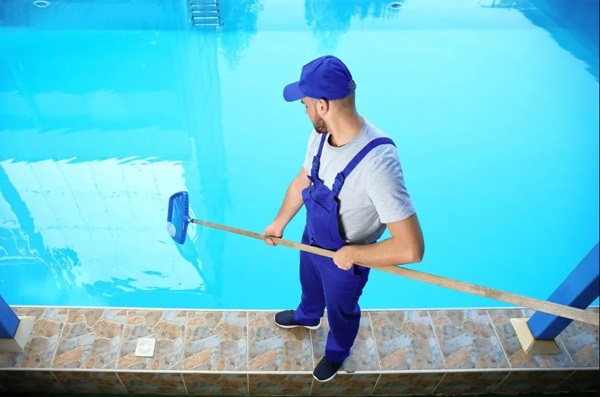
Estimating the Lifetime Cost of Pool Maintenance and Service
Annual Maintenance Costs: Calculate the average annual expenses for routine maintenance, including chemicals, cleaning, equipment inspections, and repairs. Multiply this figure by the estimated lifespan of your pool to get an idea of long-term maintenance costs.
One-Time Expenses: Factor in one-time expenses such as initial installation costs, upgrades, renovations, and major repairs. Divide these costs by the number of years you expect the pool to last to estimate the annualized cost over its lifespan.
Inflation and Price Increases: Consider inflation and potential price increases for labor, materials, and services over time. Adjust your estimates accordingly to account for future expenses.
The Hidden Costs of Pool Ownership: What New Pool Owners Should Expect
Utilities: Expect an increase in utility bills due to higher water consumption, energy usage for pool pumps, heaters, and lighting, and additional costs for chemicals and equipment operation.
Insurance: Adding a pool to your property may increase your homeowners’ insurance premiums due to increased liability risks. Ensure you have adequate coverage to protect against potential accidents or damages.
Repairs and Replacements: Anticipate unexpected repair costs for equipment failures, leaks, cracks, or structural damage. Regular inspections and proactive maintenance can help identify issues early and minimize repair expenses.
Safety Features: Budget for safety features such as pool fences, alarms, and covers to comply with local regulations and protect against accidents, especially if you have children or pets.
Planning for the Future: Budgeting for Pool Equipment Upgrades and Replacements
Equipment Lifespan: Understand the expected lifespan of pool equipment such as pumps, filters, heaters, and lights. Plan and budget for replacements accordingly, as these components wear out over time.
Energy-Efficient Upgrades: Consider upgrading to energy-efficient equipment to reduce operating costs and maximize energy savings over the long term. While upfront costs may be higher, the potential savings in utility bills can offset the investment.
Renovations and Upgrades: Budget for periodic renovations or upgrades to enhance the aesthetics, functionality, and safety of your pool. This may include resurfacing, tile replacement, adding features like waterfalls or spas, or converting to a saltwater system.
By understanding the factors influencing pool cleaning service rates and carefully comparing options, homeowners can find a service that meets their needs and budget. It’s recommended to contact multiple pool cleaning companies for personalized quotes and compare their offerings to find the best value for your needs.

Meet David Thomas, a seasoned professional with nearly 8 years of experience specializing in inspecting and resolving issues related to swimming pools. With his expertise and meticulous attention to detail, David ensures the safety and functionality of pools, making them a refreshing oasis for all to enjoy. Whether it’s troubleshooting equipment or maintaining water quality, David’s proficiency guarantees top-notch solutions tailored to meet every pool owner’s needs.
